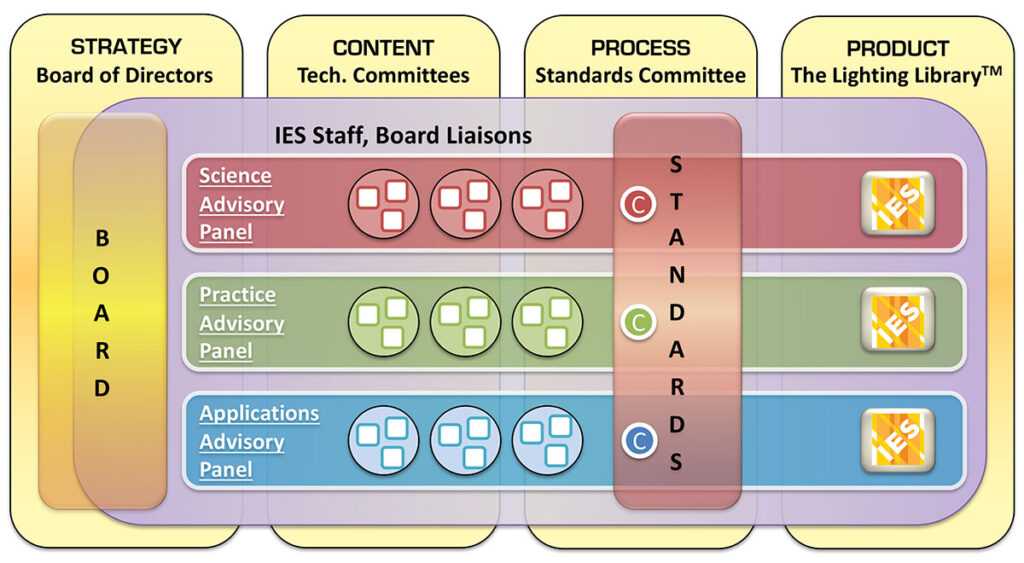The IES Technical Committee Policies and Procedures have been reviewed by ANSI and are part of the IES ANSI-accreditation. The Procedures & Policies ensure that IES standards follow the essential requirements of openness, lack of dominance, and balance.
IES uses the word “standard” to mean any IES technical document that has gone through the IES ANSI-approved process [PDF 2.0MB] and/or is included in the IES Lighting Library®. This includes the following categories of IES technical documents: CR, G, LM, LP, LS, RP, TM, WP.
The objectives for our standards are to keep up with current research and technologies and to include the broadest diversity of lighting community participation to reach consensus. While this process is sometimes difficult, we believe it results in the best source of lighting knowledge and recommended practices available in the field of lighting design and illuminating engineering, available through The Lighting Library.For a recorded overview of the IES standards process and an introduction to IES staff, please click here.
Interested in joining a technical committee? Fill in the application form to apply.

The strategic pathway for IES Standards is set by the IES Board of Directors. By setting targets for long-range objectives, the Board leads the directives for overarching themes that are used by the IES Standards and Research Department staff to direct the technical committees that write the standards. For instance, a five year goal of making our standards more agile, current and easily accessed resulted in the restructuring of the existing standards to form The Lighting Library™.
IES Standards are written by volunteer Technical Committees, composed of volunteer experts in the specific topic of interest. The technical committees are responsible for all IES standards, and to ensure fairness and diversity cannot be dominated by any single interest category, nor can there be more than one voting representative from the same company. The process that these committees must adhere to is governed by our Policies and Procedures.
The IES Standards Committee is the governing body for our standards. This group reviews the Technical Committee Charters, Project Initiation Forms(PIFs), and committee votes, making sure that committees are following proper process and staying within their approved scopes. The Standards Committee approves the documents to be issued public review and gives the final approval for publication after the public review process is complete.
IES Advisory Panels help IES staff in strategic planning and program review on standards activities. There are three panels representing the three groups of technical committees: Lighting Science, Lighting Practice, and Lighting Applications. Panel members have a broad level of expertise in these areas and serve as sounding boards to help guide staff and committee actions. Advisory Panels do not have voting power, but their guidance to staff and technical committees is highly valued.
Continuous Maintenance Form
Download Process for Change to an ANSI/IES Standard under Continuous Maintenance [PDF 1.3 MB]
